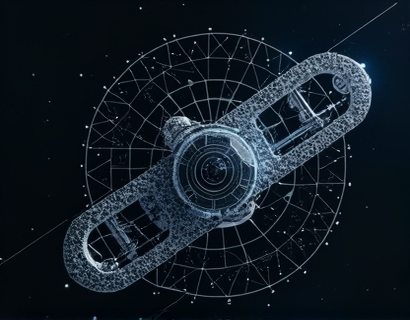Unlocking the Cosmic Secrets: Exploring the Intersection of Mathematics and the Universe
The universe, in all its vastness and complexity, has long been a source of fascination for humanity. From the smallest subatomic particles to the largest cosmic structures, the universe presents a tapestry of wonders that continue to intrigue scientists, philosophers, and the curious-minded alike. At the heart of this exploration lies an intricate dance between two seemingly disparate fields: mathematics and the cosmos. This article delves into the hidden connections between these two realms, revealing how mathematical principles underpin the very fabric of the universe and how the universe, in turn, inspires new mathematical discoveries. For science and math enthusiasts, this journey promises to unlock not only the secrets of the cosmos but also a deeper understanding of the fundamental laws that govern our existence.
The Mathematical Universe: A Fundamental Connection
The idea that mathematics is a language of the universe is not a new concept. Ancient philosophers like Pythagoras believed that numbers and geometric shapes were the essence of reality. Modern science has only reinforced this notion, showing that mathematical principles are essential to understanding the physical world. The universe operates according to precise laws and patterns, and mathematics provides the tools to describe and predict these phenomena. From the orbits of planets to the behavior of quantum particles, mathematical models are indispensable in unraveling the mysteries of the cosmos.
One of the most profound examples of this connection is Einstein's theory of General Relativity. This groundbreaking theory describes gravity not as a force but as a curvature of spacetime caused by mass and energy. The mathematical framework of differential geometry, developed by mathematicians like Riemann and Levi-Civita, was crucial in formulating this theory. The equations of General Relativity are complex and non-linear, yet they elegantly capture the dynamics of the universe on a cosmic scale. This interplay between mathematical abstraction and physical reality is a testament to the deep bond between mathematics and the universe.
Mathematics in Cosmology: Mapping the Expanding Universe
Cosmology, the study of the large-scale structure and evolution of the universe, heavily relies on mathematical models to make sense of observational data. The expansion of the universe, first discovered by Edwin Hubble, is described by Hubble's Law, which states that the velocity of a galaxy is proportional to its distance from us. This relationship is mathematically expressed as v = H0 * d, where v is the velocity, d is the distance, and H0 is the Hubble constant. Determining the value of H0 is crucial for understanding the age and fate of the universe, and it involves complex mathematical techniques, including the analysis of cosmic microwave background radiation and the distribution of galaxies.
Another key area in cosmology is the study of dark matter and dark energy, which together make up about 95% of the universe's total energy content. These mysterious components are inferred from their gravitational effects on visible matter and the expansion rate of the universe. Mathematical models, such as the Lambda Cold Dark Matter (ΛCDM) model, integrate various observational data to provide a coherent picture of the universe's composition and evolution. The precision required in these models underscores the importance of advanced mathematical techniques in cosmology.
Quantum Mechanics and Mathematical Beauty
The realm of quantum mechanics, which governs the behavior of particles at the smallest scales, is another area where mathematics plays a pivotal role. Quantum mechanics is inherently mathematical, with wave functions, operators, and Hilbert spaces forming the core of its theoretical framework. The Schrödinger equation, a partial differential equation, describes how the quantum state of a physical system changes over time. This equation is central to understanding phenomena such as quantum superposition and entanglement, which defy classical intuition.
The mathematical beauty of quantum mechanics is evident in the elegance of its equations and the profound implications they have for our understanding of reality. For instance, the Heisenberg Uncertainty Principle, which states that the more precisely the position of a particle is known, the less precisely its momentum can be known, and vice versa, is a direct consequence of the mathematical structure of quantum mechanics. This principle has far-reaching implications, influencing everything from the design of quantum computers to the fundamental limits of measurement in physics.
Mathematics in Astrophysics: Simulating Cosmic Phenomena
Astrophysics, the study of the physical universe beyond Earth's atmosphere, relies heavily on mathematical simulations to model complex cosmic phenomena. From the formation of stars and galaxies to the dynamics of black holes and neutron stars, mathematical models are essential for predicting and interpreting observational data. Numerical methods, such as finite difference and finite element techniques, are used to solve the equations that govern these processes, allowing scientists to simulate scenarios that would be impossible to observe directly.
One of the most fascinating areas in astrophysics is the study of gravitational waves, ripples in spacetime caused by the acceleration of massive objects. The detection of gravitational waves by LIGO and Virgo observatories has opened a new window into the universe, providing direct evidence of Einstein's predictions. The analysis of these signals involves sophisticated mathematical techniques, including Fourier transforms and matched filtering, to extract meaningful information from the noise. This interplay between mathematics and observation has led to groundbreaking discoveries and a deeper understanding of the universe's most violent events.
Mathematical Patterns in the Cosmos: Fractals and Self-Similarity
Nature is replete with mathematical patterns, and one of the most intriguing is the presence of fractals in the cosmos. Fractals are geometric shapes that exhibit self-similarity at different scales, meaning that a small part of the fractal looks similar to the whole. This property is observed in various cosmic structures, from the branching patterns of galaxies to the distribution of galaxies within clusters. The Mandelbrot set, a famous fractal named after mathematician Benoit Mandelbrot, is a prime example of how mathematical concepts can describe natural phenomena.
The study of fractals in cosmology has led to insights into the large-scale structure of the universe. The distribution of galaxies and the cosmic web, a network of filaments and voids, exhibit fractal properties. This self-similarity suggests that the same mathematical principles govern processes occurring at vastly different scales, from the quantum level to the cosmic scale. Understanding these patterns not only enhances our appreciation of the universe's beauty but also provides tools for modeling and predicting cosmic evolution.
Mathematics and the Search for Extraterrestrial Intelligence
The search for extraterrestrial intelligence (SETI) is another domain where mathematics plays a crucial role. The vastness of the universe and the potential for intelligent life elsewhere raise profound questions that can be addressed through mathematical analysis. One approach involves the use of probability theory to estimate the likelihood of intelligent life existing on other planets. The Drake Equation, formulated by astronomer Frank Drake, is a probabilistic formula that estimates the number of active, communicative extraterrestrial civilizations in the Milky Way galaxy.
The Drake Equation incorporates various factors, such as the rate of star formation, the fraction of stars with planetary systems, and the probability of life arising on a habitable planet. While the equation is more of a framework for discussion than a precise calculation, it highlights the power of mathematics in exploring the unknown. By refining the parameters and incorporating new data, scientists can continue to refine our understanding of the potential for extraterrestrial intelligence, pushing the boundaries of both mathematics and astrobiology.
Conclusion: The Endless Frontier of Mathematical Cosmology
The intersection of mathematics and the universe is an endless frontier of discovery and inspiration. From the fundamental laws that govern the cosmos to the intricate patterns that emerge at every scale, mathematics provides the language and tools to explore and understand the universe. As we continue to push the boundaries of scientific knowledge, the role of mathematics will only become more central. For those who appreciate the beauty and power of mathematical thinking, the universe offers a boundless source of wonder and insight. Embracing this connection not only deepens our understanding of the cosmos but also enriches our appreciation of the mathematical principles that underpin our existence.










































